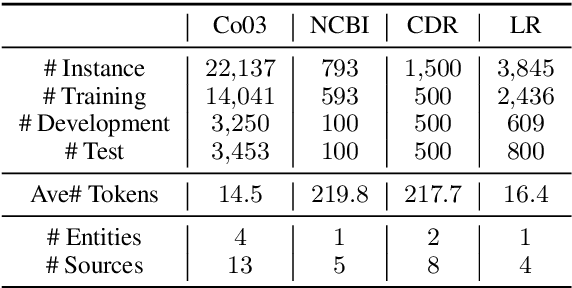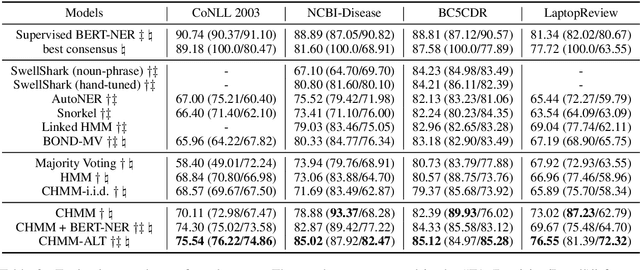Lucas Liu
Multi-Head Adapter Routing for Data-Efficient Fine-Tuning
Nov 07, 2022Abstract:Parameter-efficient fine-tuning (PEFT) methods can adapt large language models to downstream tasks by training a small amount of newly added parameters. In multi-task settings, PEFT adapters typically train on each task independently, inhibiting transfer across tasks, or on the concatenation of all tasks, which can lead to negative interference. To address this, Polytropon (Ponti et al.) jointly learns an inventory of PEFT adapters and a routing function to share variable-size sets of adapters across tasks. Subsequently, adapters can be re-combined and fine-tuned on novel tasks even with limited data. In this paper, we investigate to what extent the ability to control which adapters are active for each task leads to sample-efficient generalization. Thus, we propose less expressive variants where we perform weighted averaging of the adapters before few-shot adaptation (Poly-mu) instead of learning a routing function. Moreover, we introduce more expressive variants where finer-grained task-adapter allocation is learned through a multi-head routing function (Poly-S). We test these variants on three separate benchmarks for multi-task learning. We find that Poly-S achieves gains on all three (up to 5.3 points on average) over strong baselines, while incurring a negligible additional cost in parameter count. In particular, we find that instruction tuning, where models are fully fine-tuned on natural language instructions for each task, is inferior to modular methods such as Polytropon and our proposed variants.
BERTifying the Hidden Markov Model for Multi-Source Weakly Supervised Named Entity Recognition
May 30, 2021



Abstract:We study the problem of learning a named entity recognition (NER) tagger using noisy labels from multiple weak supervision sources. Though cheap to obtain, the labels from weak supervision sources are often incomplete, inaccurate, and contradictory, making it difficult to learn an accurate NER model. To address this challenge, we propose a conditional hidden Markov model (CHMM), which can effectively infer true labels from multi-source noisy labels in an unsupervised way. CHMM enhances the classic hidden Markov model with the contextual representation power of pre-trained language models. Specifically, CHMM learns token-wise transition and emission probabilities from the BERT embeddings of the input tokens to infer the latent true labels from noisy observations. We further refine CHMM with an alternate-training approach (CHMM-ALT). It fine-tunes a BERT-NER model with the labels inferred by CHMM, and this BERT-NER's output is regarded as an additional weak source to train the CHMM in return. Experiments on four NER benchmarks from various domains show that our method outperforms state-of-the-art weakly supervised NER models by wide margins.
 Add to Chrome
Add to Chrome Add to Firefox
Add to Firefox Add to Edge
Add to Edge